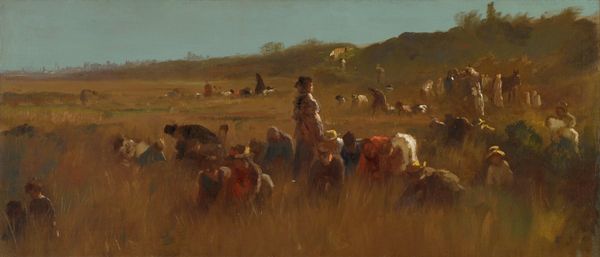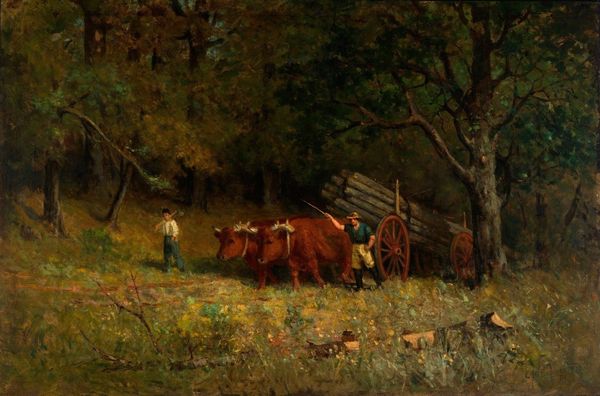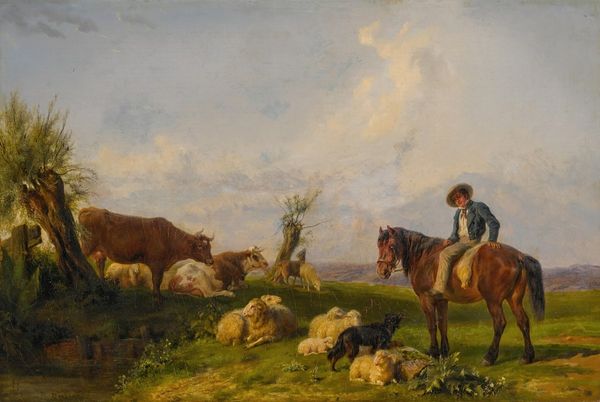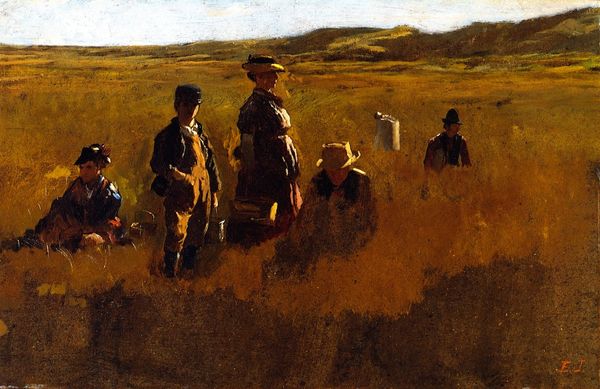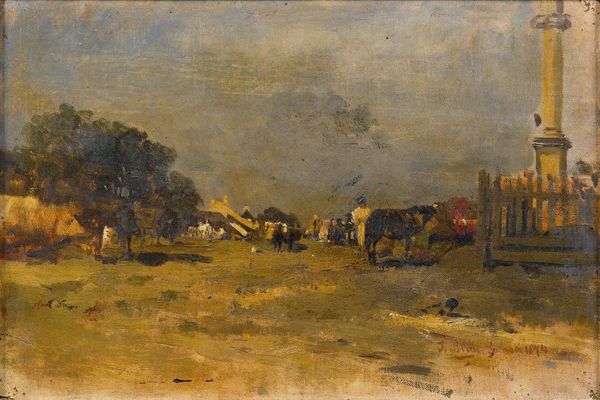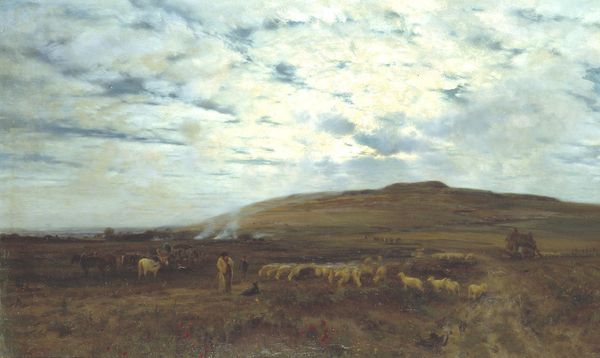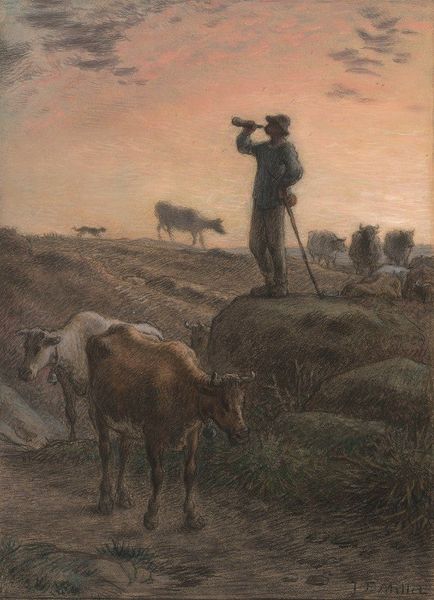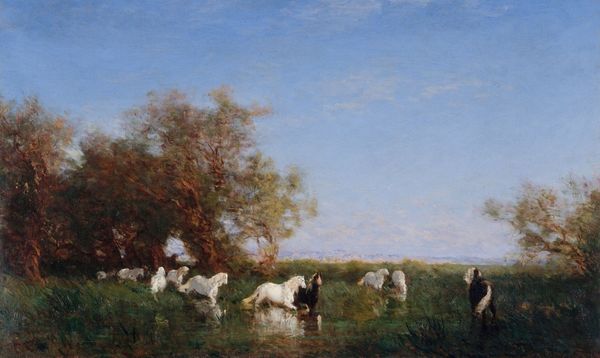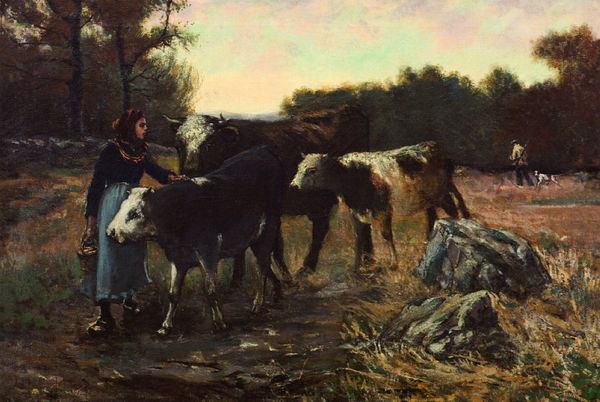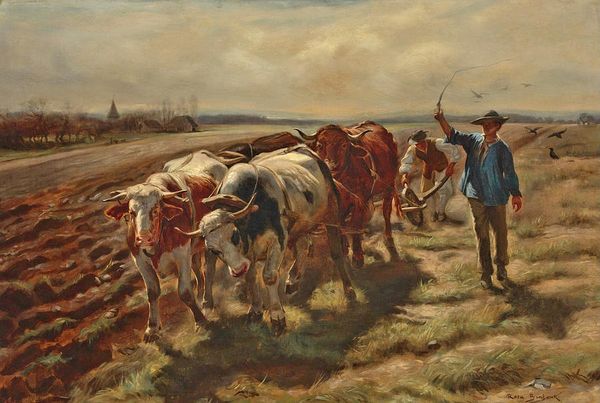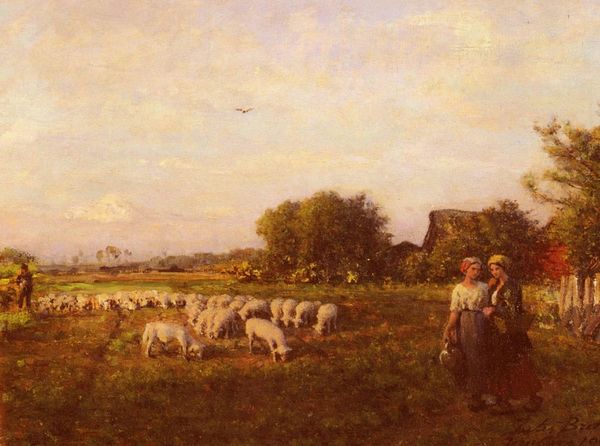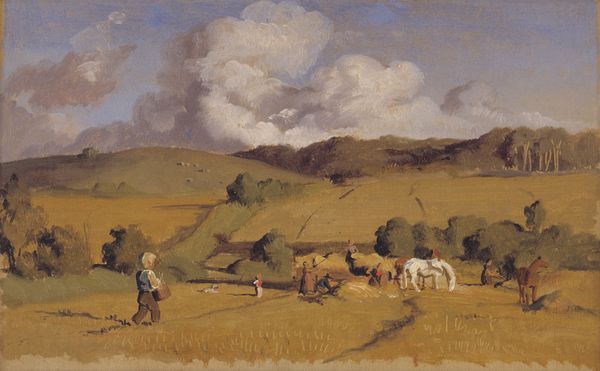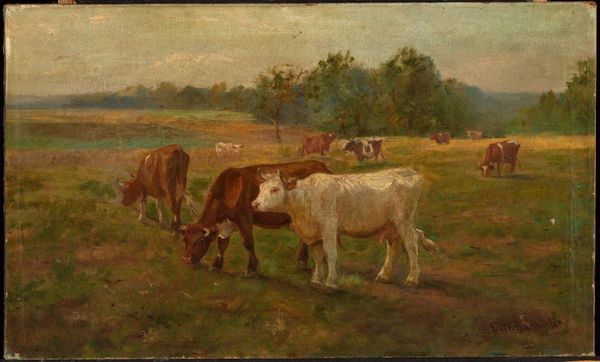
painting, oil-paint
#
figurative
#
painting
#
impressionism
#
oil-paint
#
landscape
#
oil painting
#
genre-painting
#
realism
Copyright: Public Domain: Artvee
Curator: Eastman Johnson's "Cranberry Pickers," painted around 1878 or 1879, depicts a wide view of laborers harvesting cranberries, seemingly lost in the landscape. The oil paint has a wonderful softness about it. What is your first impression? Editor: My initial feeling is one of somber beauty, actually. There’s an almost overwhelming sense of quiet labor, of bodies bent over the land under a wide, pale sky. It is giving me agrarian melancholy. Curator: Yes, that subdued palette certainly contributes. Johnson's known for his genre scenes of rural life, but this one moves beyond simple documentation. He often captured these ordinary, sometimes marginalized communities. Here, we have people quite literally merging with the environment, an endless field punctuated by figures. Editor: Which is crucial when we're considering the cultural implications. Are we really acknowledging this back-breaking work, or are we romanticizing exploitation? Johnson's composition certainly makes it beautiful, but who profits from all those harvested berries? Curator: A valid and uneasy point, perhaps heightened by the artistic lens of the time that veered away from direct socio-political commentary in favor of an aesthetic representation of "American life". Though, one could argue that there's something intrinsically political about choosing these subjects at all – representing unseen labor. Editor: I appreciate the artist focusing on the nuances within that community of workers but must recognize the socioeconomic context that shapes those communities. Otherwise, are we looking through rose-tinted glasses? Curator: Maybe. There’s a delicate balance here, right? Are we just seeing pretty colours, or also a critical document? It’s that very tension, I think, that makes it so resonant. It leaves us, or at least me, with that strange mix of calm and unease. Editor: Precisely, that dissonance forces us to acknowledge a more complex and complete vision of reality. It challenges us to recognize those in-between spaces of light and shadow in everyday experiences. Curator: Well said. Makes me see it with different eyes each time, I reckon.
Comments
No comments
Be the first to comment and join the conversation on the ultimate creative platform.
